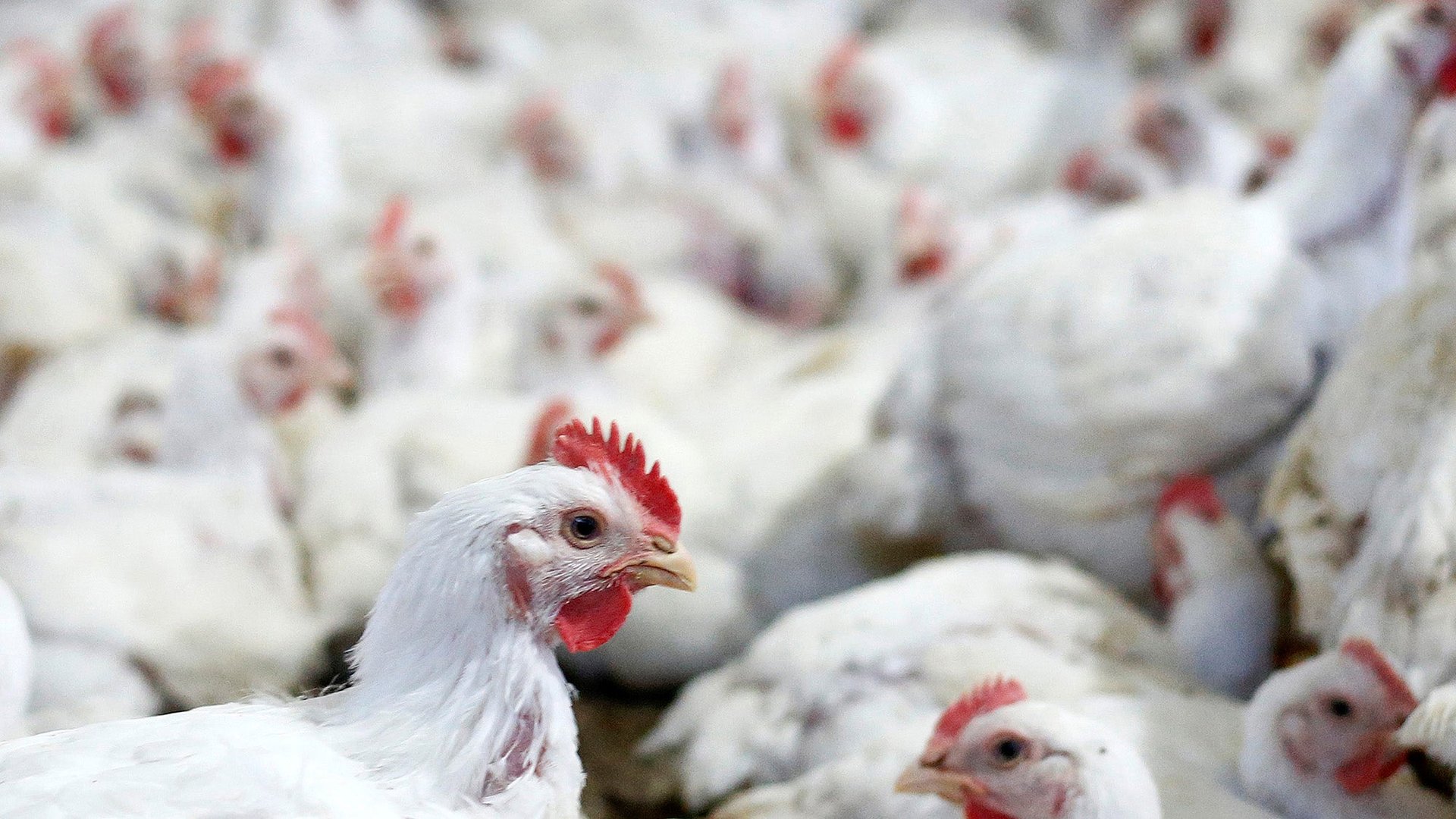More humane chicken breeding would cost consumers 1% extra
If the world’s largest meat companies abandoned fast-growing chickens for those that grow at a slower pace, it’d increase meat prices by just 1%.


If the world’s largest meat companies abandoned fast-growing chickens for those that grow at a slower pace, it’d increase meat prices by just 1%.
That’s the conclusion of a trio of agricultural economists at Purdue University who offer a glimpse into a topic that’s rarely explored because the necessary data are tough to wrangle. The findings were presented in a working paper (pdf) posted today (Nov. 1), and helps to answer questions around a highly controversial topic within the larger food system.
Animal-welfare advocates have long cast meat companies as the overseers of a cruel system in which chickens are bred to grow so heavy so quickly that their legs can’t support their weight. They’ve argued the industry should opt for more humane production practices. But little is known about how production costs would be impacted if the industry pivoted away from the ultra-heavy birds.
Chicken breeders have over time managed to create different lines of chickens, kind of like how car companies create different model cars. The business of creating these different models largely falls to three global breeders: Aviagen, Cobb-Vantress, and Hubbard. Each breeder owns the genetic information needed to create highly curated chicken types, each with a laundry list of traits such as strong legs, faster growth, or even “exceptional livability.”
The Purdue economists compared two fast growing breeds—the Cobb 500 and the Ross 308—to two slower-growing ones—the Ranger Gold and the Ranger Classic.
The target weight for many broiler chickens that wind up in grocery stores is about 6 pounds. The slower-growing breeds take between 54 and 59 days to reach that weight. The faster-growing breeds hit that target in about 41 days.
As Purdue economist Jayson Lusk put it, the cost to farmers to abandon the fast-growing birds would increase by about 14% for two reasons. Slower-growing birds means less turnover in a given time period. Also, if a bird takes a longer time to reach a certain weight, it will be eating more feed over that longer time period to produce the equivalent amount of meat.
That 14% doesn’t directly cross over into retail, Lusk explains. After considering the costs of processing, packaging, shipping, and also consumer willingness to pay a premium for birds marketed as slower-growing, the economists settled on the idea that retail prices would have to increase by just 1.17%. Overall, they said, if the US switched to slower-growing breeds, the meat industry would sell about .91% less chicken than it does currently in a given year, amounting to about $3.5 billion in lost profits.
These data give ammunition to both sides of the debate, Lusk says. For animal welfare advocates, the 1% increase in retail prices could be characterized as a small price to pay to stop some animal suffering. For producers, the 14% increase in costs to raise the chicken could be a solid reason to stick to the status quo.